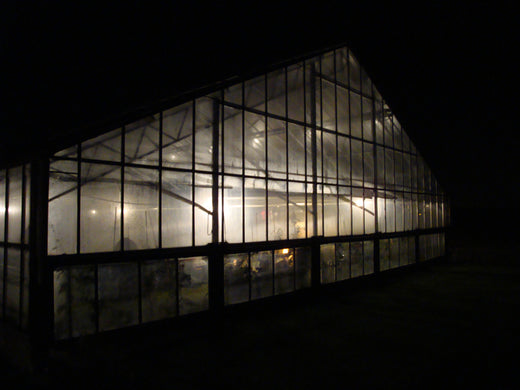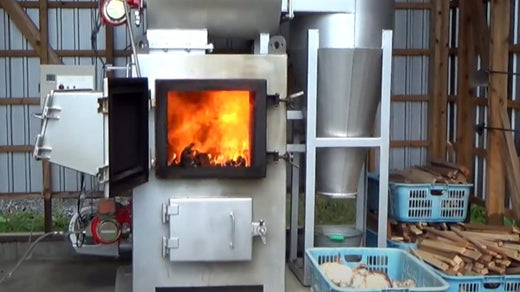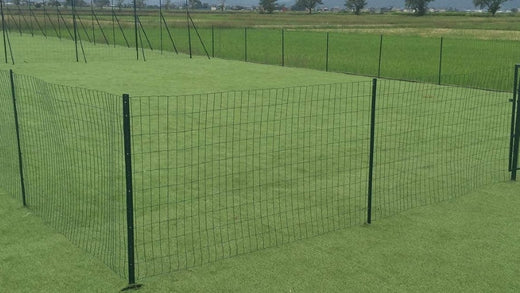The method of cultivating crops such as vegetables and fruits is divided into "outdoor cultivation" and "conservation cultivation". Of these, "enclosed cultivation" is a method of cultivating vegetables and fruit trees using vinyl greenhouses, etc. Compared to open-field cultivation, it is possible to obtain stable yields, and it is possible to cultivate vegetables that are not in season. It's a big advantage.
However, if the temperature and humidity required for the growth of crops cannot be secured, it is necessary to heat and retain heat, so a heating facility must be installed. For example, the growth of tomatoes and eggplants slows down at temperatures below 15°C, and stops at temperatures below 5°C.
Heavy oil boilers are the most commonly used heating equipment for greenhouse cultivation. In regions where the temperature is low, the heating costs for the crops grown in greenhouses in winter can reach several million yen, and fuel costs account for a very high proportion of operating costs.
Therefore, if crude oil prices soar, it will have a big impact on farming. In recent years, crude oil prices have repeatedly fluctuated, and it can be said that it is a constant hardship for greenhouse farmers who use only petroleum-based boilers. 
Figure 1. Trends in A heavy oil prices (extracted from the Fisheries Agency website )
Trivia: What is heavy oil in the first place?
Unrefined oil as it is extracted from an oil field is called crude oil. By distilling this crude oil at a refinery, it becomes various types of petroleum products such as gasoline, kerosene, heavy oil, and light oil.
Specifically, the difference in boiling points is used to separate each type of oil, and thick heavy oil is refined at a temperature of 360°C or higher.
Heavy oil is classified into three types, Type 1 (A heavy oil), Type 2 (B heavy oil) and Type 3 (C heavy oil), depending on the difference in viscosity. C heavy oil is the lowest standard residual oil, and because it contains many impurities, it has a high environmental impact and has poor combustion efficiency compared to other petroleum products, but it is 30 to 40% cheaper than A heavy oil.
It is used as fuel for large diesel engines for ships, thermal power plants, and large boilers for district heating and cooling. Heavy oil B is a mixture of about 50% light oil and 50% residual oil, and is used as diesel fuel and burner fuel.
Very few are produced now. Heavy oil A has almost the same composition as light oil sold at gas stations (the carbon content is slightly higher). Diesel oil is subject to a tax of 32.1 yen per liter, but heavy oil A is not subject to taxes other than consumption tax, provided that its use is limited to agriculture and fisheries. It is often used as a fuel for agricultural machinery, ships, and greenhouse heating.
By the way, A heavy oil is tax-free and cheaper than light oil, so there have been many cases of fraud such as using A heavy oil in diesel engines in the past. For this reason, it is now legally required to mix A-heavy oil with a chemical substance called coumarin to prevent fraud.
Because coumarin fluoresces under specific wavelengths of ultraviolet light, it is now easy to distinguish between light oil and A-heavy oil.
Reasons why oil prices fluctuate
The price in the market is determined by a mechanism in which market participants express their intention to buy and sell, and the price is settled at a price where the buy and sell are in equilibrium.
In addition to supply and demand trends for crude oil and petroleum products, concerns over future supply and demand, financial trends, and geopolitical risks such as conflicts and terrorism affect the crude oil market participants' willingness to buy or sell. Crude oil prices fluctuate due to changes in the intentions of market participants affected by these factors. And the recent crude oil prices have remained at high levels.
The Organization of the Petroleum Exporting Countries (OPEC) and major non-OPEC oil-producing countries such as Russia have re-extended their joint crude oil production cuts, which were due to expire in March 2018, until the end of 2018. Considering the concerns that the supply of crude oil will be interrupted due to the ongoing political instability in Saudi Arabia, and the impact of the yen's depreciation, it is unlikely that crude oil prices will fall significantly for the time being.
Agricultural house heating without petroleum
In greenhouse cultivation, which uses a lot of oil, including heavy oil, as fuel, heating costs at the current high level of crude oil prices are a very large cost factor. Therefore, there is a growing movement to use alternative heating methods that differ from traditional oil boilers.
▼Biomass boiler
A biomass boiler is a boiler that utilizes renewable natural energy. Solid fuel is used as fuel. Benefits include reduced energy costs, reduced CO2 emissions, and reduced waste disposal costs.
Solid fuels are divided into those that use wood chips and those that use wood and various residue pellets as recycled fuel. In addition to wood pellets, the types of pellets include sawdust, sludge, agricultural residue (konjac powder), food residue (coffee grounds, etc.), RPF (vinyl and plastic waste), and other items that have been discarded until now. Various pellet fuels are manufactured using
Difficult points include the difficulty of stable fuel procurement and the high cost of initial introduction.
heat pump
A heat pump uses electricity as a power source to move heat. Therefore, there is a feature that heat several times the power consumption can be used for heating.
The downside, however, is the installation cost. As an example, if you install two 10-horsepower heat pumps in an area of 300 tsubo, the main unit costs about 2.6 million yen (for two units), installation and plumbing work costs about 500,000 yen, and electrical work costs about 900,000 yen. The initial investment cost is 4 million yen. *Electrical work costs vary greatly depending on the house and the position where the electricity is drawn in.
However, it is said that the operating cost for heating is about 30 to 40% lower than that of a heavy oil warm air heater alone. For example, if the annual heavy oil heating cost is 1 million yen, the cost will be reduced by about 400,000 yen per year.
However, if you try to supplement the heating of the facility only with heat pumps, you will have to install a lot of units, so the introduction cost will be too high. Therefore, in order to reduce the total cost, hybrid operation using A heavy oil hot air heater is common. If the price of fuel oil A exceeds 50 to 60 yen, heat pump heating becomes more advantageous in terms of operating costs.
summary
Cultivating in greenhouses with only a hot air heater that uses heavy oil A, which is greatly affected by fluctuations in crude oil prices, poses a considerable risk.
Considering the recent price of heavy oil, a heating method that does not use oil has a significant cost reduction effect. If used well, it is possible to actively develop greenhouse cultivation that is not bound by fuel consumption. If you are a facility farmer who only uses heavy oil boilers, you may want to consider using them together.

 箱罠
箱罠
 くくり罠
くくり罠
 パーツ類
パーツ類
 電気柵
電気柵
 自作キット
自作キット
 防獣グッズ
防獣グッズ
 監視カメラ
監視カメラ




 box trap
box trap
 tying trap
tying trap
 enclosure trap
enclosure trap
 Prevention and avoidance goods
Prevention and avoidance goods
 electric fence
electric fence
 trap surveillance camera
trap surveillance camera
 transportation goods
transportation goods
 Trap detection sensor
Trap detection sensor
 hunting supplies
hunting supplies
 game cookware
game cookware
 hunting books
hunting books
 Anti-bird goods
Anti-bird goods
 Agricultural materials/machinery
Agricultural materials/machinery
 Gibier
Gibier
 boar
boar
 deer
deer
 Kyon
Kyon
 monkey
monkey
 raccoon
raccoon
 Badger
Badger
 palm civet
palm civet
 raccoon dog
raccoon dog
 nutria
nutria
 mouse or rat
mouse or rat
 Mole
Mole
 bear
bear
 pigeon
pigeon
 Crow
Crow







